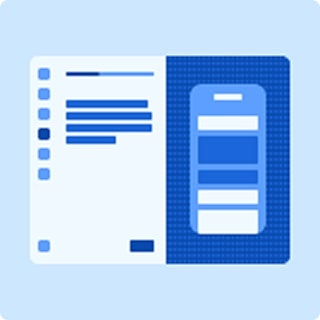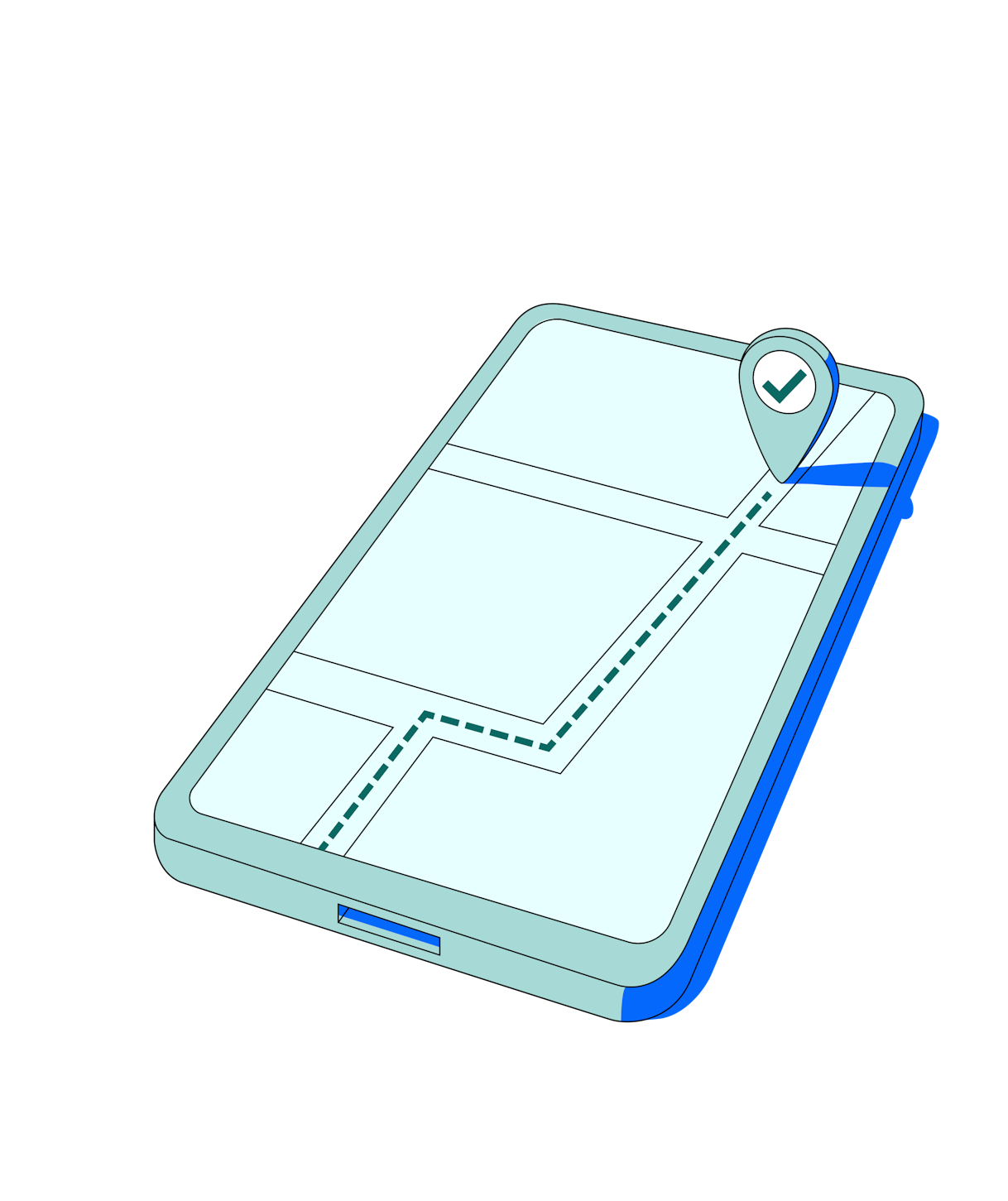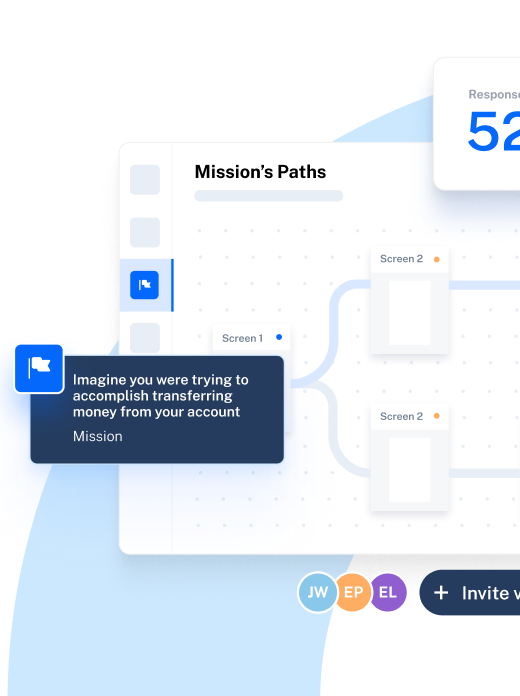Planning and conducting user interviews is a significant task. From recruiting participants, scheduling sessions, analyzing your results, and taking your key findings to stakeholders—there’s a lot on the to-do list.
So when it comes to conducting the interview itself, you want to ensure everything is lined up to gather the most useful user insights possible. This is where an effective user interview discussion guide is invaluable.
Besides being the most crucial part of the process, navigating your interview effectively and moving the conversation forward is also one of the most daunting parts.
TL;DR:
A solid user research discussion guide helps you navigate the interview effectively and move the conversation in the right direction. It structures your session and ensures you’re getting relevant, accurate feedback from participants that will help achieve your UX research objectives.
In this article, we cover how to write your user research discussion guide and best practices to bear in mind ahead of your next round of user interviews. We also share a free template so you can start your next session with confidence.
Why you need a user research discussion guide
It may seem like over-preparing for an interview could risk you coming across as scripted, or edge towards encouraging cognitive biases, but a robust user interview discussion guide actually does the opposite—and it’s critical to an effective interview.
A user research discussion guide serves as a detailed plan that helps direct and guide your user interview conversation. It enables you to prepare for your interview and structure your session—avoiding any wasted time, awkward breaks, or unanswered questions.
Alongside this, a user research discussion guide also helps you:
- Align insights with research objectives: By creating a user research discussion guide, you can ensure the questions you ask are aligned with your UX research objectives. It gives your team time to think of what to ask, and how to ask it, for the most helpful insights.
- Ensure consistent and reliable feedback: If you’re asking all participants the same questions as per your guide, you’ll get a more accurate dataset of consistently structured feedback—making it easy to conduct thematic analysis and uncover reliable insights.
- Save time and effort: Moderating UX research sessions can be resource-intensive, but they’re well worth it if you get the insights you’re looking for. A user research discussion guide gives you a roadmap to follow, helping you manage time and energy when it comes to directing the conversation.
Jane Davis, Senior Product Manager at Maze, emphasizes how important research discussion guides are for aligning research with stakeholder goals and objectives:
“I start every research project by crafting a discussion guide. That lets me align my stakeholders on the goals for the interviews and primes me with questions I might want to ask. I’ll also use the guide as something to fall back on if the conversation gets off track and I want to redirect us to a new topic or set of questions.”
Plus, that's not all—discussion guides make user experience research easier for the whole team, too. By sharing your guide beforehand, team members can identify any missed opportunities for possible questions, making user testing a team sport.
When your project is finished, the discussion guide also serves as a key research document, which you can store in your research repository to keep track of your methods and questions for the research project.
⚙️ Need to recruit participants for your upcoming interview? Maze Panel helps you find the perfect participants for your study, with 400+ available filters and 130+ countries to recruit from.
What should you include in your user research discussion guide?
There’s no strict rules for what to include in your discussion guide, but the essentials are an introduction, a list of questions, and a session wrap-up.
📝 Want to get started straight away?
Take a look at our user research discussion guide template. With all the relevant sections to ensure your conversation runs smoothly and you maximize insights—simply download and fill in!
1. Your introduction and background questions
In this phase, you’re aiming to introduce yourself and the session, ease participants into the interview, and build rapport. Once you get the ball rolling, you can transition into the more important research questions.
Start by including a brief introduction of yourself (name, pronouns, job role) and the purpose of your study. Invite the participant to introduce themselves, and ask if they consent to you recording the research interview—something that can help you maximize the insights you obtain from your session.
Finally, ask background questions about your participant, their pain points, or how they generally use your product. This not only warms them up to talking and sharing, but also gives you a chance to cross-reference your screener questions and identify participant fraud.
💡 Pro tip
Make sure your background questions differ to your original screener questions. While they both reflect your desired recruitment criteria, screener questions tend to be quick and close-ended, while background questions are open-ended questions your participant can expand on.
Jane suggests allocating a few minutes for these open-ended questions to better understand your user and obtain more contextual feedback from the very start of the interview:
“I like to set aside at least 5-10 minutes of every interview for open-ended questions around the person I’m interviewing and what their days are like. Usually I ask, ‘Tell me about you and what you do’, then follow up with, ‘Tell me about your day yesterday.’
“A lot of detail comes up during this initial intro section that winds up being applicable to my other questions, or leads us naturally into one of the topics I’m interested in. It’s also a great chance to build more context and intuition for your users by simply having a better idea of what their lives are like.”
For example, let’s say you’re about to conduct a user interview. Your product is a project management software called CollabTree. Some questions you could ask include:
- What type of work do you do and how long have you been in your role?
- What did last week look like for you?
- What tasks do you do using CollabTree?
- How often do you use CollabTree?
Your participant’s answers to background questions are important. They can give context to many of your main questions. During this introductory phase, encourage the participant to think out loud while listening carefully during the actual interview.
2. Your topics and generative interview questions
Asking the big questions is what your hours of recruiting, screening, and scheduling culminates in. As you wade deeper into the interview and build rapport with your participant, you can begin asking these crucial user research questions to collect the feedback you need.
Start by writing out the topic sections you want to cover throughout the interview. Next, write a list of open-ended, non-leading questions for each topic—and take care to avoid any biased answers by considering the many cognitive biases that can affect participants.
For each section, your questions should begin general before funneling to more specific questions—a cycle you repeat for each topic. This allows for an organic but organized flow to the conversation.
Jane notes that time for each question can vary depending on the topic you’re exploring:
“It really depends on what I’m trying to learn. If we’re talking about a very specific topic or part of their workflow, I’ll try to keep it somewhat short, like 5-10 minutes, but if I’m trying to assess their feelings or opinions on more sensitive topics, or am trying to go deeper into something more complex, I’ll allow myself at least 15 minutes and often up to 30 to make sure I’m not rushing things.”
Let’s say there are two topics you want to cover for your upcoming CollabTree user interview studies: the Gantt chart feature and the project management capabilities. Here’s how how you can devise generative questions for your sections:
Gantt chart feature:
- When's the last time you created Gantt charts with CollabTree?
- What’s the most difficult part of creating Gantt charts with CollabTree?
- What product features could be different to help you solve this task more easily?
Comprehensive project management suite:
- How many features/tools do you usually use in Collabtree?
- Do you find yourself having to use other tools besides CollabTree for your project management tasks?
- What tools are missing from CollabTree (if any) that would make completing project management tasks easier?
✨ Need some question inspiration?
The Maze Question Bank is a free question repository for user research, with over 350 researcher-approved question templates, for all sorts of objectives, subjects, and scenarios.
3. Your session wrap-up
Your session wrap-up isn’t just a section for saying goodbye. A carefully crafted discussion guide conclusion gives you the opportunity to collect more valuable feedback and end on a good note with your participant. Your session wrap up is a key part of a stellar interview experience. Do it right, and it can help increase participant retention for future studies.
Make sure to include time to thank your participants and invite them to ask any questions they have—whether that be about the interview questions, the product, their interview data, or anything else.
This is also the perfect place in your discussion guide to provide info on any incentives you’ve offered to participants. You should also remember to gather final confirmation that interviewees are comfortable with the session recording being shared.
🔎 Wrapped up and ready for next steps? Once you’ve completed your interview, it’s time to extract insights. Check out our guide to analyzing user interview conversations.
With a warm introduction, thought-provoking generative questions that target your main research objectives, and a strong wrap-up, you can’t go wrong with your user research discussion guide.
Get started with our pre-made user discussion guide template, available to download here.
4 Best practices for writing and using a user research discussion guide
A user research discussion guide is a helpful tool to make moderated interviews easier and put you on the path to gaining valuable feedback. However, conversations are unpredictable—and you need to prepare for that (as best you can) in your user interview discussion guide.
Here are four best practices to ensure your interview guide leads to the insights you’re after.
1. Align your questions with your research objectives
Even if your participants are giving you in-depth answers, it won’t be of much use if you haven’t asked them the right questions. We recommend writing down your UX research objective as a note in the beginning of your guide as a constant reminder you’ll circle back to.
Ask yourself: does getting responses to the interview questions you’ve written help you reach your outlined research goals and objectives? If not, remove the question and start again.
Jane suggests structuring your entire guide around your research goal.
You should know what questions or information are vital to accomplishing your research goal, and structure your discussion guide in a way that enables you to drop certain topics or sections that are lower priority if the interview is running long.
Jane Davis
Senior Product Manager at Maze
Share
If you haven’t formalized your UX research objectives yet, focus on this before creating your discussion guide or writing questions for your interview. A simple, actionable objective in the form of an overarching research question helps dictate the direction of your UX research project.
Once you’ve aligned your interview questions with your research objectives, check in with other team members and stakeholders. They can provide you with more questions, alternatives, and feedback to ensure the insights you gather will offer maximum value to everyone.
2. Prepare follow-up questions
During interviews, you’re doing many things at once. Between actively listening to your participant and asking the big questions, it’s easy to overlook more opportunities.
However, one thing you don’t want to do is leave insights on the table. Instead, prepare two to three follow-up questions for each question on your list. You don’t need to use all of these follow-up questions, but having them primed if you spot an opportunity can open up answers for more granular, detailed, and contextual insights.
For example, let’s go back to an example question from our CollabTree study: Do you find yourself having to use other tools besides CollabTree for your project management tasks?
Some follow-up questions could include:
- Which external tools do you frequently use in addition to Collabtree for project management?
- What specific features or functionalities do these external tools provide that Collabtree does not?
- How do you integrate or manage the use of multiple tools for your project management needs?
During the interview itself, participants may say some surprising and interesting things you’ll benefit from exploring. While you want to plan your follow-up questions ahead of time, you may also need to think on your feet for some follow-up questions, following the trail of your participant’s responses—which leads us to our third best practice…
3. Leave a reasonable amount of room for spontaneous insights to emerge
We said it once and we’ll say it again—conversations are unpredictable. It’s not realistic to schedule, structure, and manage every minute of your interview—and that’s not necessarily a bad thing.
One of the main advantages of qualitative research methods is they offer the opportunity for spontaneous and deep insights to emerge. If you rigidly stick to your discussion guide, you can unintentionally pass up on organic, relevant qualitative feedback.
While you should definitely have a plan complete with both generative and follow-up questions, set some time aside to explore ‘off script’ responses your user provides.
However, don’t let the conversation stray too far from the topic at hand. Hillary Omitogun, UX Research Consultant and Founder of HerSynergyTribe notes the importance of always bringing participants back to the main topic:
Although interrupting should be discouraged, sometimes it’s necessary to gently steer the conversation back on track if it deviates significantly. Too many diverging topics during an interview is counterproductive. It’s okay to step in if you need to.
Hillary Omitogun
UX Research Consultant and Founder of HerSynergyTribe
Share
🤔 Need a way to gently bring back a participant when they stray away from the main topic? Express appreciation for their point and gently guide the conversation back to your original question i.e. “Thanks for sharing that. It would be great to hear what you think about [topic]”. You can then revisit their point with any remaining time later.
4. Conduct a pilot for your user research discussion guide
Before you and your discussion guide navigate an interview with real users, you need to conduct a pilot test with team members and stakeholders. Jane explains:
“To help manage my time, I run a pilot interview with a coworker or peer. This lets me better understand how long each section might take, and adjust my questions and guide accordingly. A pilot interview will also help you narrow down the list of potential questions and understand how your guide flows.”
Conducting a pilot test helps you:
- Identify and replace irrelevant and unclear questions: Ask for immediate feedback after asking each question. Did pilot test participants find answering questions difficult? Were the questions clear? Consider if the insights you uncovered are relevant to your UX research objective?
- Ensure your questions sequence and conversation flows naturally: Pilot test participants can tell you if the conversation feels natural and follows a logical flow when transitioning between topics.
- Estimate and adjust the duration of your session: Longer, in-depth interviews take up to an hour, while shorter ones typically last about 20 to 30 minutes. By watching the clock during the pilot test, you can ensure you’re asking your whole question list within your time constraints.
Once you conduct your pilot test, you may have to cross out some questions, think of new ones, or reorder topics before finally taking your user research discussion guide to the interview.
With a step-by-step process and best practices in hand, your discussion guide is geared for success. However, you still need to consider how the interview is taking place.
Put your discussion guide to use with Maze
User research discussion guides give you a plan for your interviews. They ensure you’re able to navigate the interview effectively, move the conversation forward, and uncover the insights you need for your research project.
But even with a discussion guide, you still need the right tool to guarantee your interview goes smoothly.
Maze is the leading UX research platform that allows you to organize, conduct, and analyze your user interviews. With Maze Interview Studies, you can quickly generate session transcripts and automatically identify key themes and insights from the qualitative data you’ve gathered.
With specialized AI features like Perfect Question—which takes your questions and improves them— you can eliminate leading questions, subconscious bias, and grammatical errors from your script. Plus, when all’s said and done, you can quickly and easily share in-depth Automated Reports that cover all the key insights and findings from your research study.
User interviews are one of the top qualitative research methods. The insights you can uncover are unmatched—but only when you know how to get them. A user interview discussion guide combined with the right tool helps guide your interview toward the insights you need.
Frequently asked questions about user research discussion guides
What is a user research discussion guide?
What is a user research discussion guide?
A user research discussion guide is a document used by researchers to structure and plan interviews, focus groups, or other qualitative UX research sessions. It outlines the objective, topic, questions, and activities of the session, helping researchers direct the conversation and extract meaningful insights from participants.
What is the role of a discussion guide in qualitative research?
What is the role of a discussion guide in qualitative research?
A discussion guide plays a key role in qualitative research. It:
- Provides structure and consistency for your qualitative research sessions
- Helps the researcher stay on track and focused when asking questions and directing the conversation
- Leaves space for spontaneous insights to emerge with a flexible framework
What are the five important rules to guide a discussion?
What are the five important rules to guide a discussion?
When guiding a discussion, the five most important rules are:
- Understand your objectives
- Listen actively and respectfully (and don’t interrupt)
- Stay neutral and avoid bias
- Be flexible with participants’ responses
- Keep track of time






